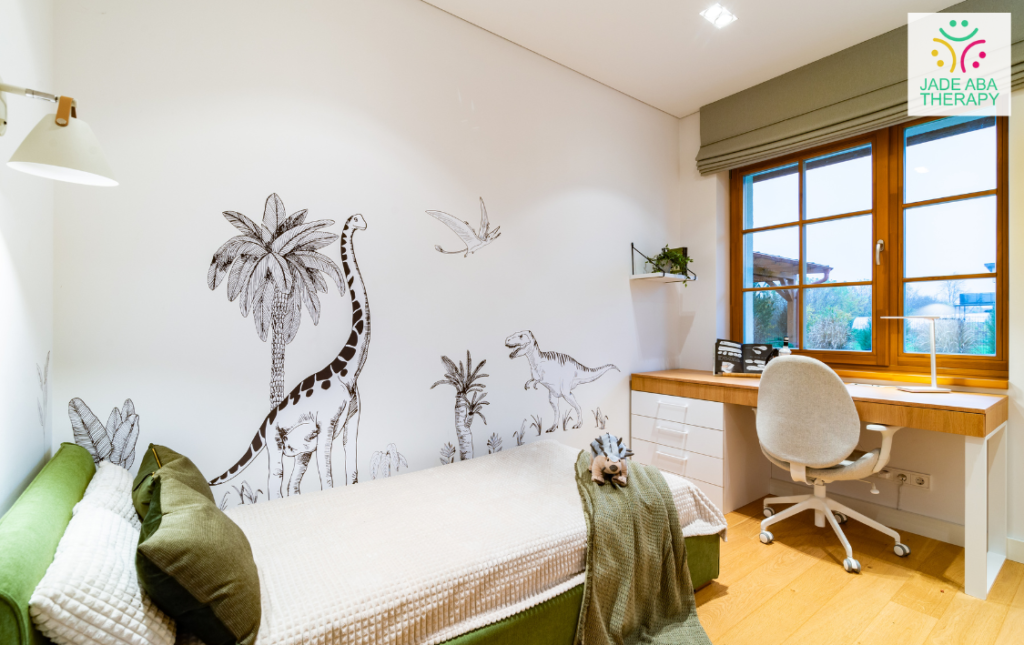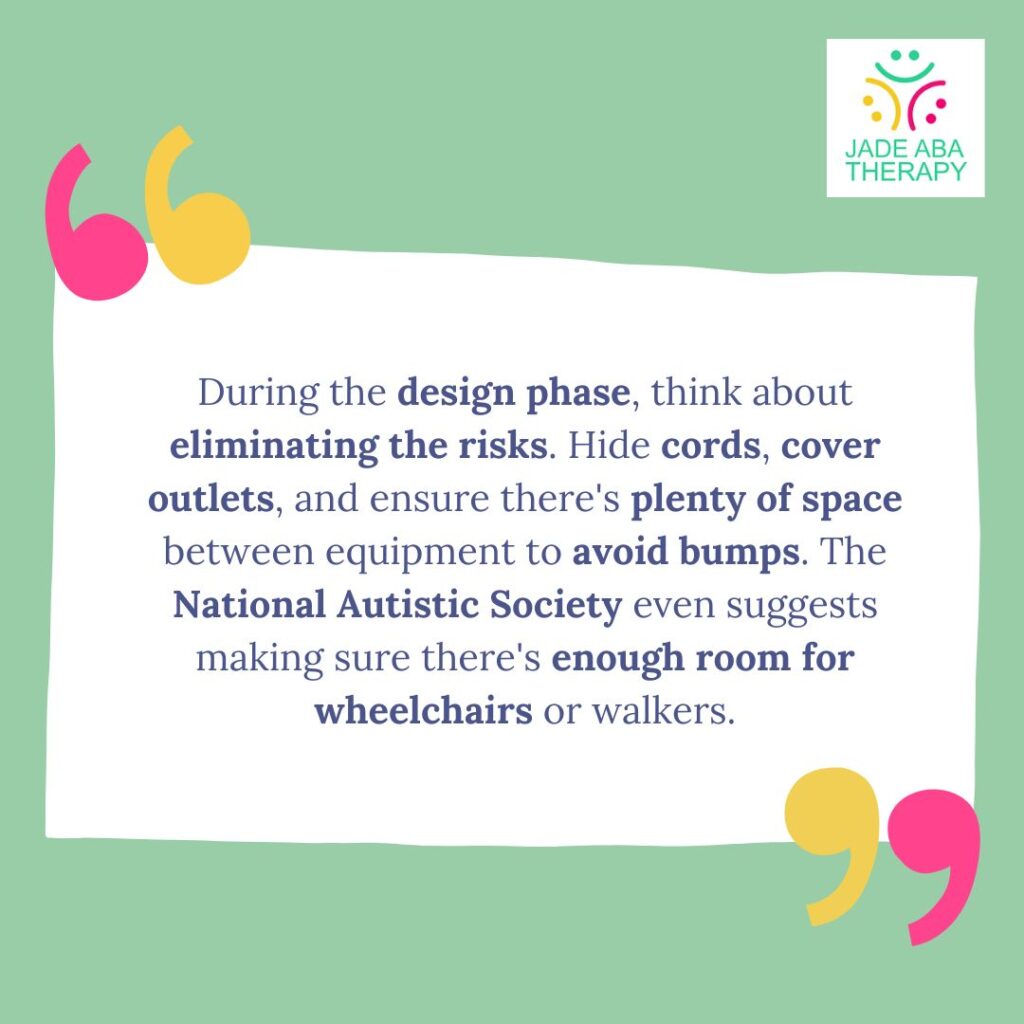Does your child with autism struggle to wind down after a long day? Perhaps their sleep is interrupted by sensory overload. If so, creating a sensory bedroom can be a game-changer. Picture a calming space designed specifically for your child’s unique sensory needs.
This isn’t just about decoration. Sensory rooms and bedrooms, sometimes called multi-sensory rooms, are popping up in schools and homes for a reason. They provide a safe haven where children can relax, recharge, and feel in control.

In this comprehensive guide, we’ll unveil the secrets to designing a sensory bedroom that supports your child’s well-being. We’ll delve into everything from calming color schemes and soft textures to stimulating lighting and engaging activities.
Personalized Bedrooms for Special Needs
Imagine a room that transforms to match your child’s mood. One minute it’s a calming oasis for sleep, the next it’s a vibrant space for creative fun. This is the magic of a personalized bedroom for a child with autism.
These special bedrooms empower children by giving them control over their environment. Feeling overwhelmed by loud noises or bright lights? They can retreat to their calming space with soft textures and gentle lighting.
But the benefits go beyond empowerment. When the world feels overwhelming, your kid will have a familiar space to retreat to, a place where they can recharge and feel safe. This is especially important for children who struggle with sleep issues.
Sensory Rooms and How They Help
For children with autism, sensory overload is a constant threat. The world can be a cacophony of sights, sounds, and textures. A sensory room provides a safe haven, a place to escape the overstimulation and return to a sense of calm.
Just like you might feel a sense of unease when your environment feels overwhelming, a sensory room offers a place to regain control and find solace. Think of it as a secret weapon against the struggles of autism.
Sensory rooms are filled with carefully chosen elements that engage all five senses in a controlled way. This allows children to explore their senses at their own pace, fostering better communication skills, improved focus, and a greater sense of emotional well-being.
Research has shown that sensory rooms are like zen gardens for autistic individuals. They offer a space to de-stress and refocus. Studies have shown a decrease in self-harming behaviors and a significant boost in concentration levels.
In essence, sensory rooms are calm, yet stimulating spaces where children with autism can be themselves without fear of judgment or overstimulation. They are a valuable tool for tackling the difficulties of ASD and promoting a sense of well-being.
Creating An Ideal Space
The key to a successful sensory room is thoughtful design. Each element, from the mesmerizing visuals to the calming scents, serves a purpose. They all work together to create a therapeutic environment that effectively addresses the challenges faced by children with autism.
1. Empowerment Through Choice
Many children with autism find comfort in routine and familiarity. Involve them in the design process! If dinosaurs capture their imagination, incorporate dinosaur-themed bedding or wall art. This personalization fosters a sense of ownership and comfort within their space.
2. Calming Through Organization
Clutter can be visually overwhelming for anyone, but especially for children with autism. Maintaining an organized space is key. Consider visual aids like checklists to help with tasks like bedtime routines. Structure and predictability can significantly reduce anxiety.
3. The Power of Soft Colors
Opt for soft, muted colors for walls, bedding, and curtains. Bright, bold colors can be overstimulating, making the room feel uncomfortable. However, remember that you know your child best. If a particular calming color resonates with them, incorporate it!
4. Art with Intention
Just like with colors, be mindful of the artwork adorning the walls. Busy or visually complex pieces can be distracting. Showcase their own artwork if they enjoy creating it, or collaborate on choosing calming pieces together.
5. Light Control is Key
Adjustable lighting allows you to create the perfect ambiance. Dimmable switches provide flexibility, especially if your child prefers a low-light environment. Blackout curtains add another layer of control, eliminating unwanted light that might disrupt sleep.
6. Quieting the World
Many children with autism are sensitive to noise. Employ noise reduction strategies like thick curtains, rugs, and sound-absorbing panels. These can significantly reduce outside noise pollution. For relaxation, explore playing calming music.
7. Creating a Safe Haven
Provide a designated space for relaxation and security within the bedroom. A cozy reading nook or a large, plush armchair can create a comforting retreat after a stimulating day.
8. The Power of Scents
Aromatherapy can be a wonderful tool for creating a calming atmosphere. Consider essential oils like lavender, known for its relaxing properties, or chamomile, which can promote feelings of tranquility. Research different oils and their effects to find the perfect fit for your child.
9. Personalized Comfort
Allow your child to choose their bedding, pillows, and blankets. This fosters a sense of ownership and makes the space feel more like their own. Weighted blankets and body pillows can offer additional comfort and security during sleep.
10. Enclosed Safety
Consider a fully enclosed safety bed. This can provide a reassuring sense of security throughout the night. By reducing light and noise as well as offering a contained environment, you may promote better sleep patterns for your child.

Safety Considerations when Designing
Building a sensory room is all about creating a fun and stimulating space, but safety should always be first. When a room is filled with cool equipment, it can also present potential hazards like loose cords or equipment too close together. Not ideal!
During the design phase, think about eliminating these risks. Hide cords, cover outlets, and ensure there’s plenty of space between equipment to avoid bumps. It is also suggested to make sure there’s enough room for wheelchairs or walkers.
For extra protection, consider padded walls. Crash mats are a must-have too! And don’t forget comfy bean bags for those chill moments after all the fun. Remember, a sensory room should be both stimulating and safe – prioritize both for a happy and healthy space.
The Takeaway
In conclusion, creating a sensory bedroom isn’t just about following a checklist – it’s a journey of discovery. Think of it as a chance to learn from your child’s therapists and identify the skills and goals you want to address.Slowly introduce elements into the space, adapting it over time as your child’s needs evolve. Just like adults have their own retreats, every child with autism deserves a space where they can find comfort and a better understanding of themselves.
Sources:
https://brightautism.org/blogs/news/why-an-autistic-child-should-have-their-own-personalized-bedroom
https://www.autismparentingmagazine.com/create-an-amazing-sensory-room